► 1.4-litre ‘baby’ 935 from 1977
► Tiny, but mighty, petrol engine
► And a socking great turbocharger
It was one of those right-place, right-time phonecalls I’m so grateful I picked up.
It’s the 2019 Goodwood Festival of Speed and I’m ogling the headscrambling array of racing car royalty in the paddock when I pick up a call from Porsche’s senior press officer Rob. It’s like a daydream made real:
The driver lined up to pilot the Porsche museum’s 1977 935/2.0 is AWOL, and the car is waiting without a driver in the assembly area. If I can get there in the next two minutes…
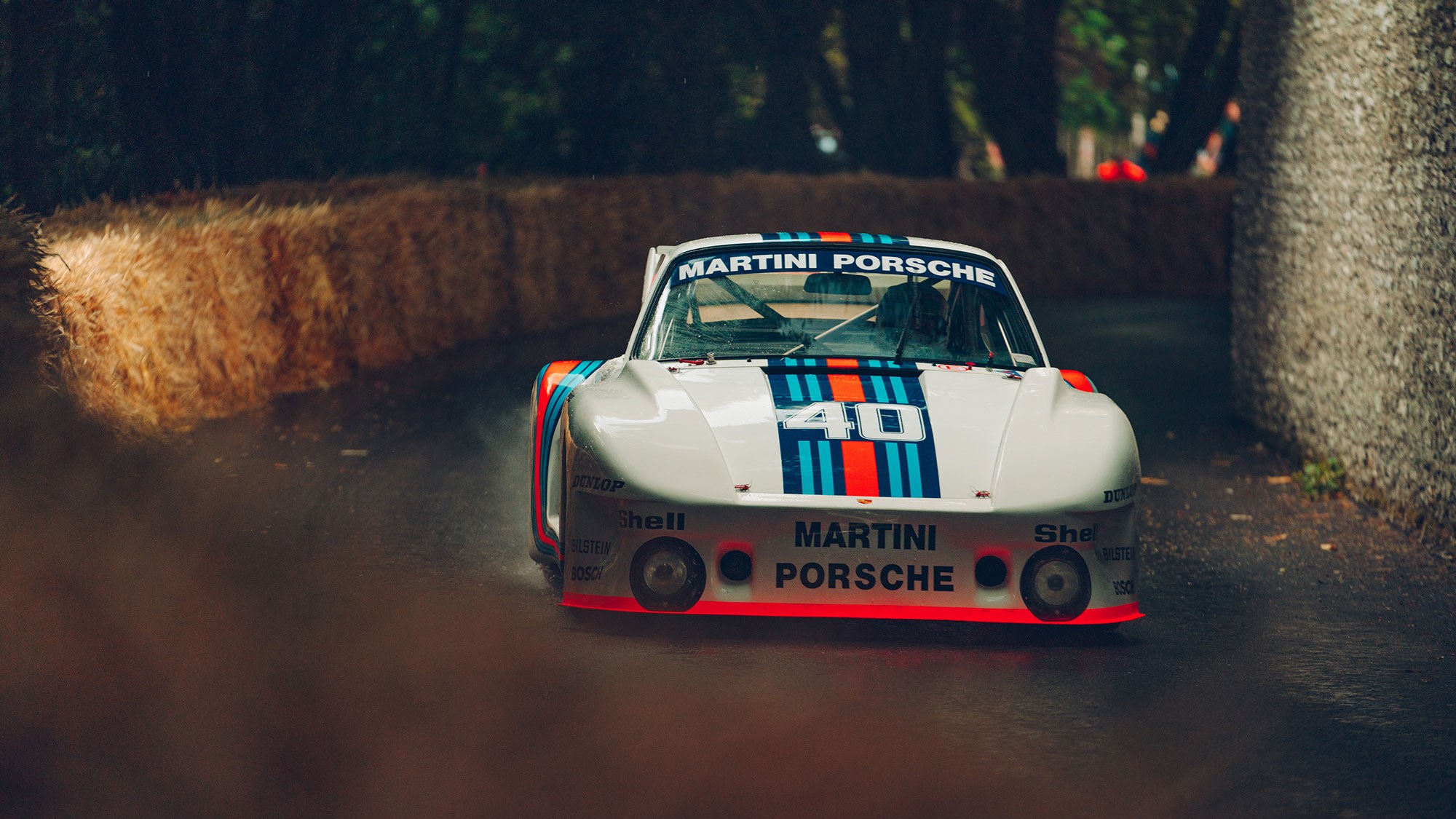
…about 100 seconds later the assembly area is subjected to the indecorous sight of me changing into a race suit in a hurry, and climbing aboard 935 ‘Baby.’ It’s so nicknamed because it’s powered by the smallest six-cylinder racing engine ever created by Porsche. Only 1425cc (less than half the size of the regular 935’s engine) and yet around 370bhp, courtesy of a gigantic single turbocharger.
A miniature history lesson
In dayglo Martini stripes from its flat nose to its Moby-Dick-in-miniature tail, Baby is stunning, one of the most visually arresting cars of the entire festival.
It’s as fascinating a creation as it looks. While its bigger 935 brothers were cleaning up at the forefront of sportscar racing, Porsche created the baby-engined version so it could do the same in the German DRM championship’s 2.0-litre class, spoiling Ford and BMW’s party (hence it’s official name, the 935/2.0, despite its 1.4-litre displacement).
It’s a highly specialised creation, with a special chassis and lightweight body panels to meet its division’s strict weight limit. It weighs only 710kg dry. Climbing aboard, you must be careful how much weight you place on the car’s floor, a thin composite skin below the chassis tubes.
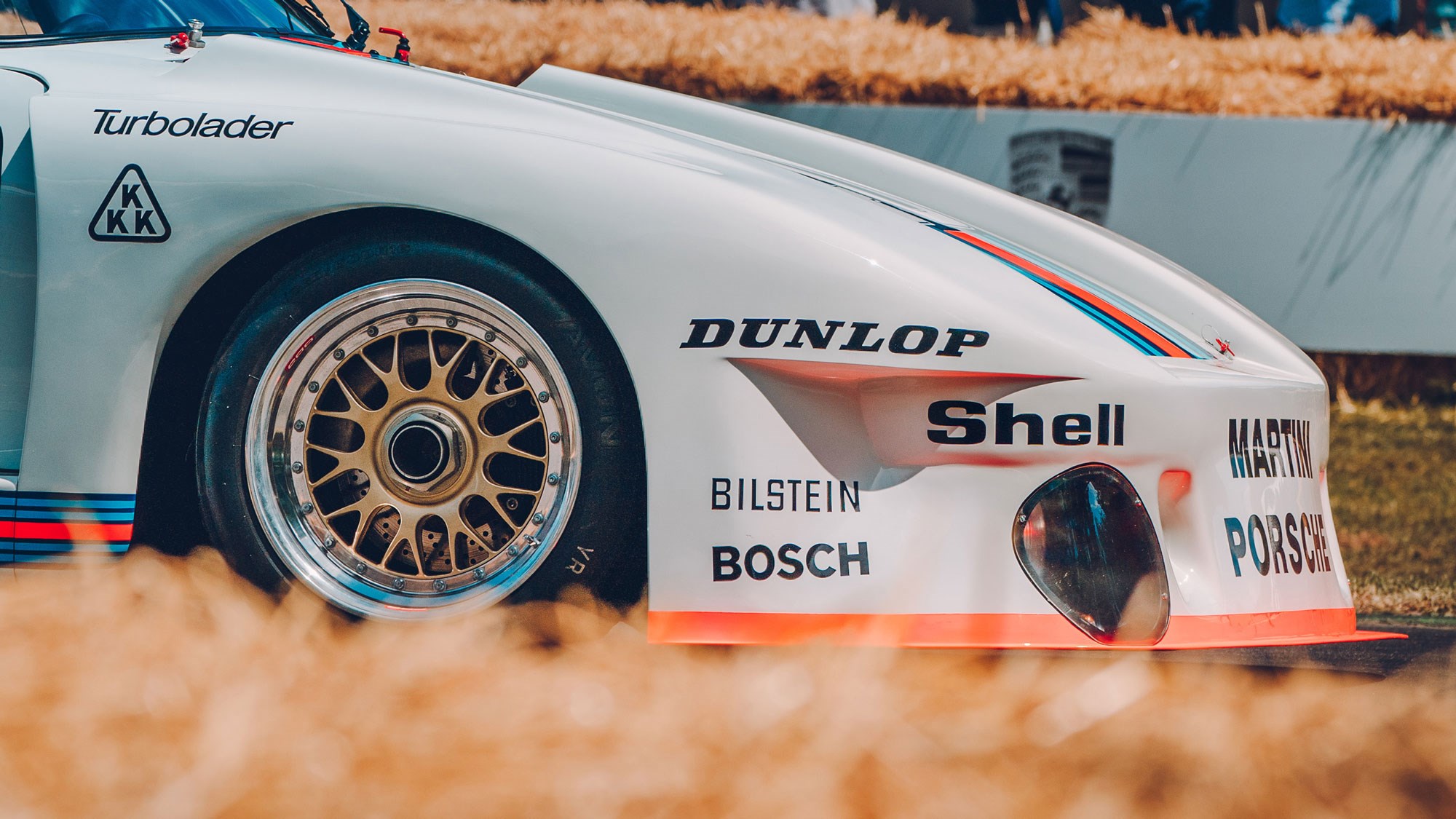
It’s also a one-of-one. Raced by Jacky Ickx in period, it competed only twice, retiring from its first race at the Norisring with teething troubles and then absolutely dominating its second at Hockenheim (lapping most of the field) before being withdrawn from racing, its point proven. There’s no time to dwell on the car’s irreplaceable value, thankfully, because no sooner have I climbed in then it’s time to go, following a JWA Gulf-liveried Ford GT40 down to the assembly area, what-on-earth-am-I-doing-here sensation in full swing.
On the move
I try to use the moments on the run down to the startline queue to get a feel for the car; the brakes bite nicely, the steering is slow-geared and needs more lock than you think, and visibility ahead is great through the trademark upright 911 screen.
Either side of the flat-nosed bonnet disappearing out of view ahead are tiny, neat mirrors hidden in aerodynamic shrouds, through which I can see precisely nothing at all. (You get the impression they were created more as a cheekily aerodynamic sop to the regulations than for actually seeing.)
The gearbox is a five-speed H-pattern, with a heavy but friendly clutch. There isn’t a conventional differential at the back, this is a live rear axle – one less thing to go wrong to go wrong in endurance racing – so it doesn’t like turning on full lock at the bottom of the hill. But I haven’t stalled it. Result.
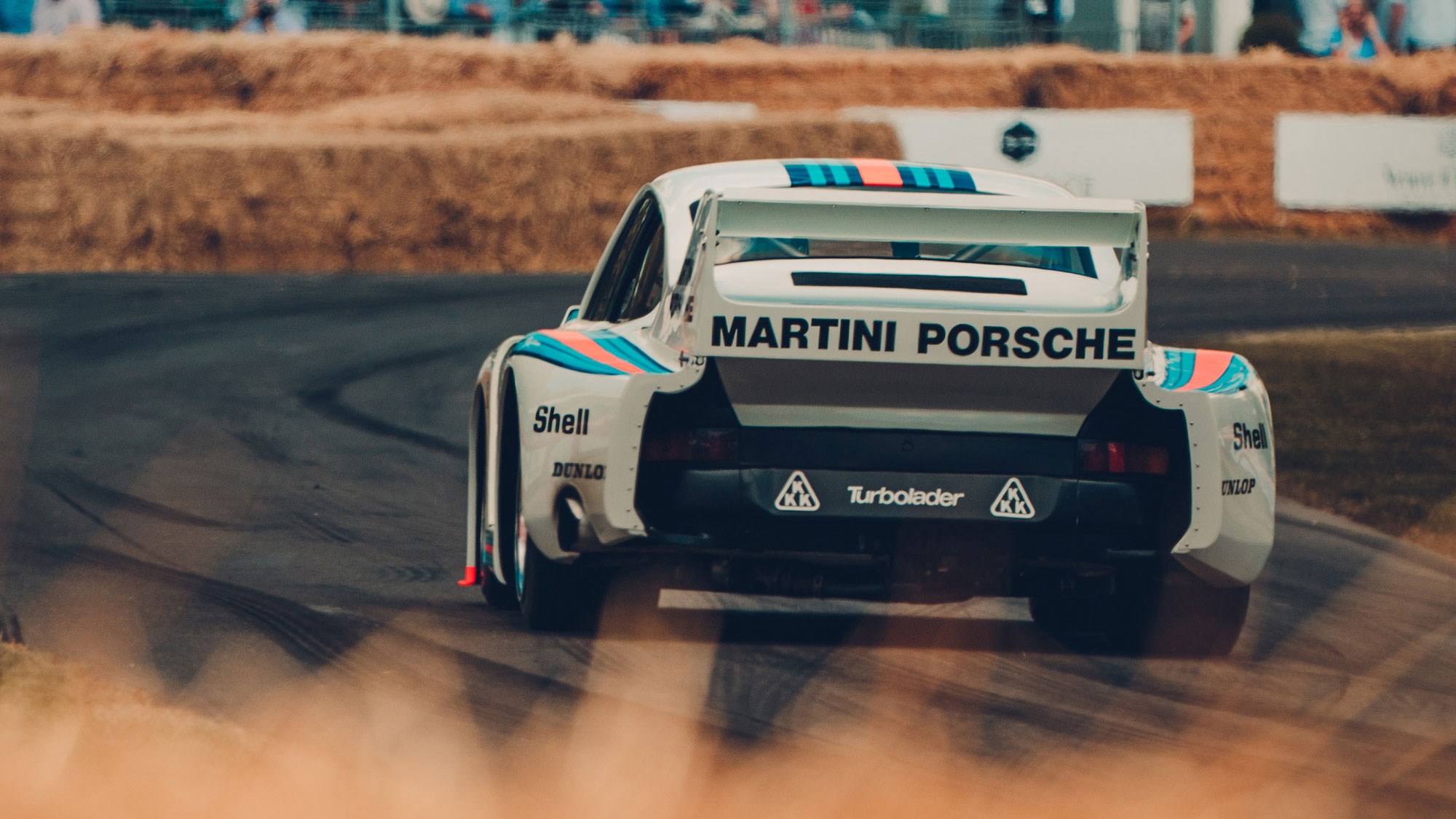
Whenever the revs drop below 4000rpm the oil pressure light winks on, and I’ve been told to keep them up where possible in the queue to avoid fouling the plugs. At low revs, the tacho needle waggles vaguely, but in the higher registers – where it counts – it’s perfectly precise.
Fast forward (after a pause)
We’ve reached the line, the marshal waves me away, revs up, clutch up and… a gentle pull away.
The 935 leaves the line smartly but undramatically. The revs are rising slowly and we’re going fast but not that fast; maybe there’s something wrong, maybe something in the drivetrain is worn out, maybe… then it hits 6000rpm and all of a sudden Baby feels very grown-up indeed.
That giant turbo has finally hit its stride and the engine note goes from a gruff growl to a soaring six-cylinder song. Turns out this 935 has one of the narrowest power bands I’ve experienced; peak power is just past 8000rpm, the redline is at 9, and practically nothing happens before 6.
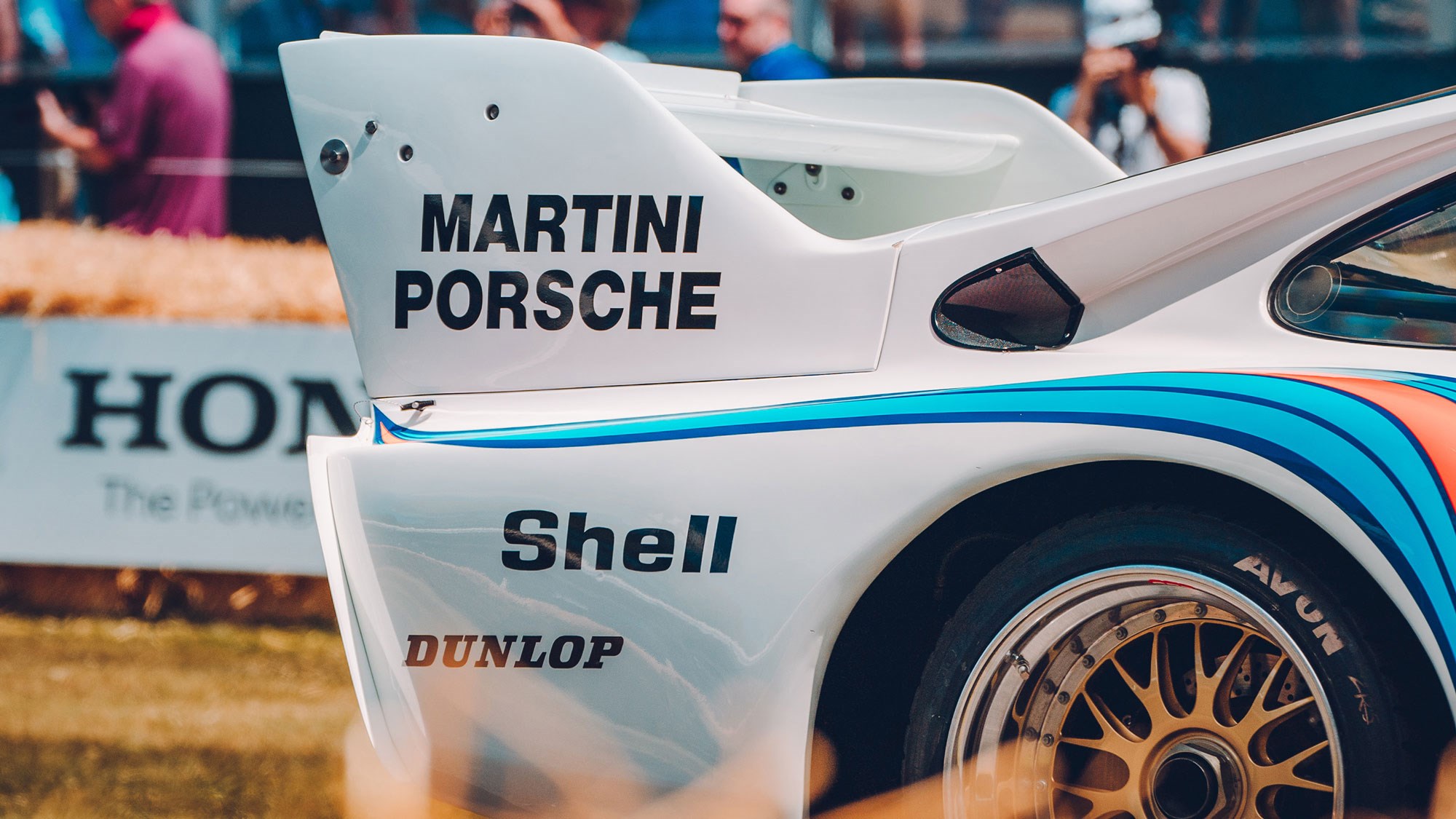
When it’s in the zone, it’s seriously quick, no doubt about it. It sounds wonderful, and feels pretty special in the corners too, with an initially vague, yet positive response from the front end and caterpillar-track traction from the rear.
To race it in period must have been a case of keeping it right in that magic power band, and to do so the driver would need to be a hero like Ickx.
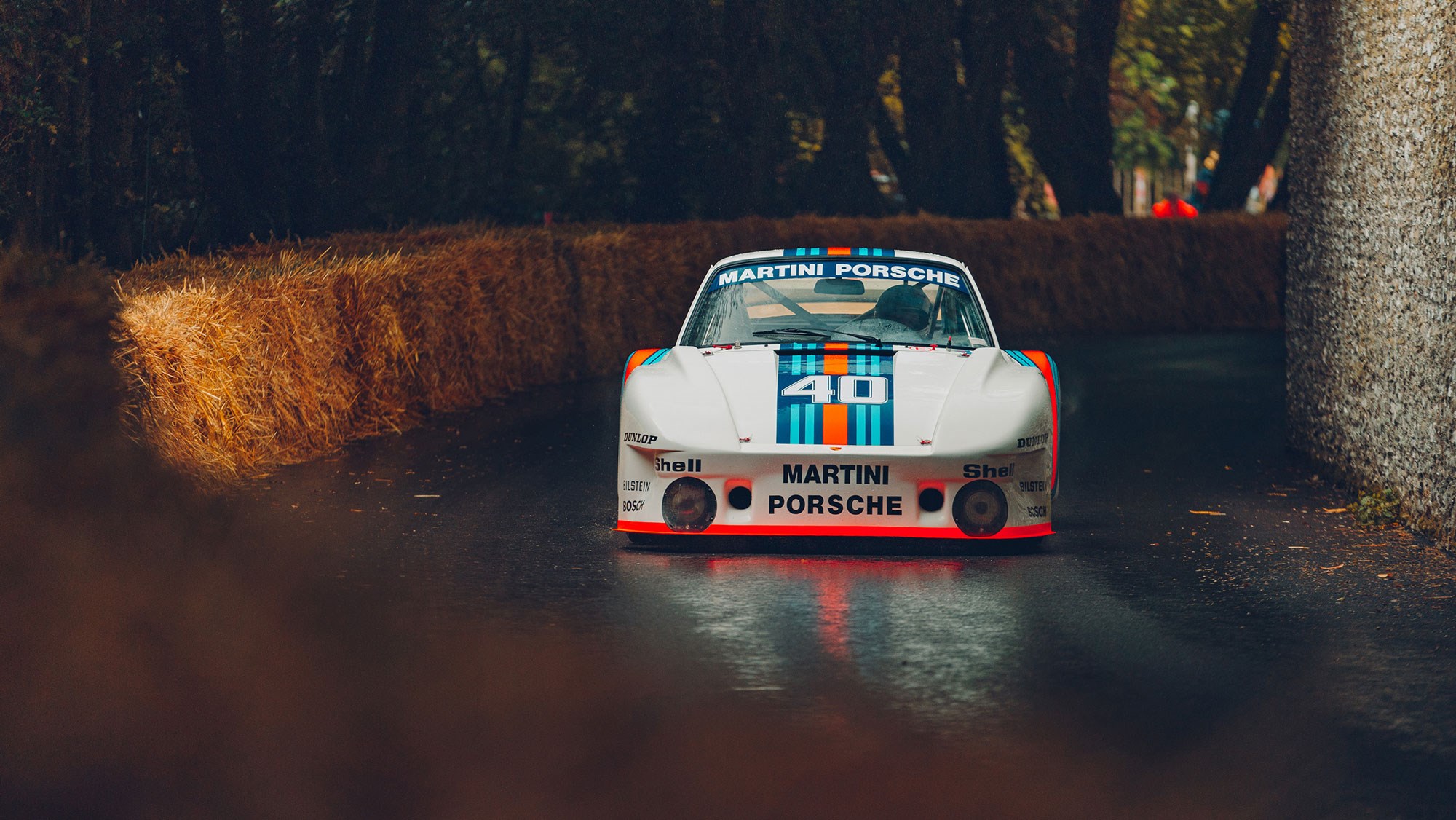
As a mortal, I was happy to drive as briskly as it felt safe to do so for an irreplaceable piece of history, avoid fluffing any gearshifts and park at the top of the hill next to Count Rossi’s road-legal 917 (another pinch-me piece of Porsche folklore) in a bit of a daze. I’ve been in one ever since.
I’m just glad I hadn’t left my phone on silent.